You may have read about the tallest animals on earth or the fastest animals, but which animals have the longest legs to help them reach these great heights? Many animals have evolved to have long legs to help them reach food, wade in water, scan for predators, and more. Regardless of the reason, long legs are an advantageous feature for many species. Check out this list of the 16 animals with the longest legs.
16. Daddy Longlegs
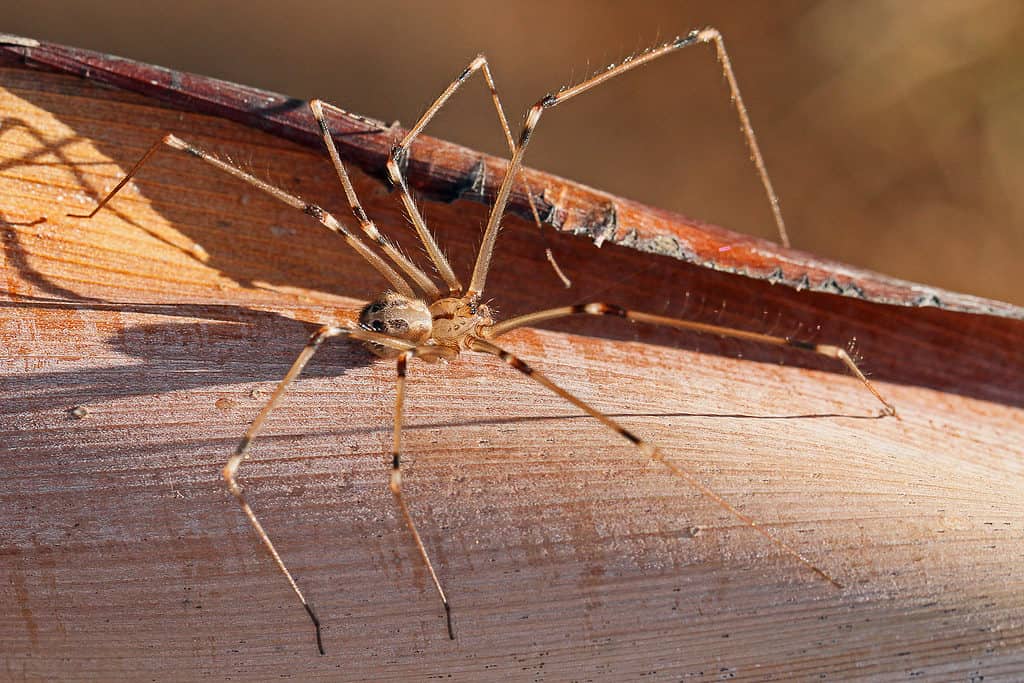
Depending on the species, some daddy longlegs have legs up to 5.9 inches long.
©Eugene Troskie/Shutterstock.com
These spiders may not be big, but, as their name implies, they have long legs. Daddy longlegs are one of the most poisonous spiders in the world. Luckily, their fangs are too short to harm people. However, their eight legs aren’t short: While the spider’s body measures 2-10 mm long, its legs can be up to 50 mm.
15. Gerenuk
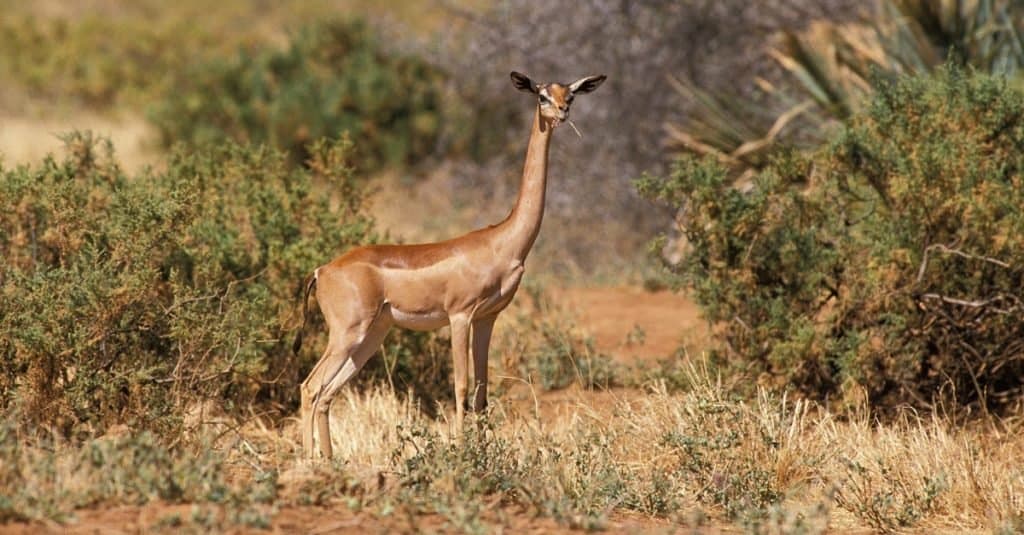
When a gerenuk stands on its hind legs it can reach more than 6 feet high.
©slowmotiongli/Shutterstock.com
A tall slender antelope, the gerenuk (Litocranius walleri) looks like a cross between a gazelle and a giraffe. Its long neck earned it the named gerenuk, which means “giraffe necked.” While its neck is impressive, so are its legs. Native to east Africa, gerenuks stand 4.25-5 feet tall, and measure 3.5-3.5 feet at the shoulder.
14. Llama

Llamas are strong pack animals and can carry 25-30% of their body weight.
©Cezary Wojtkowski/Shutterstock.com
The llama (Lama glama) puts its long legs to use just 40 minutes after being born. Less than an hour after birth, llamas are up and walking. Although their legs aren’t long then, they will grow up to have very long legs. Llamas have a shoulder height of 4-4.5 feet, and an overall height of 5.5-6 feet. Interestingly, a llama’s front legs are slightly shorter than its back legs.
13. Cassowary
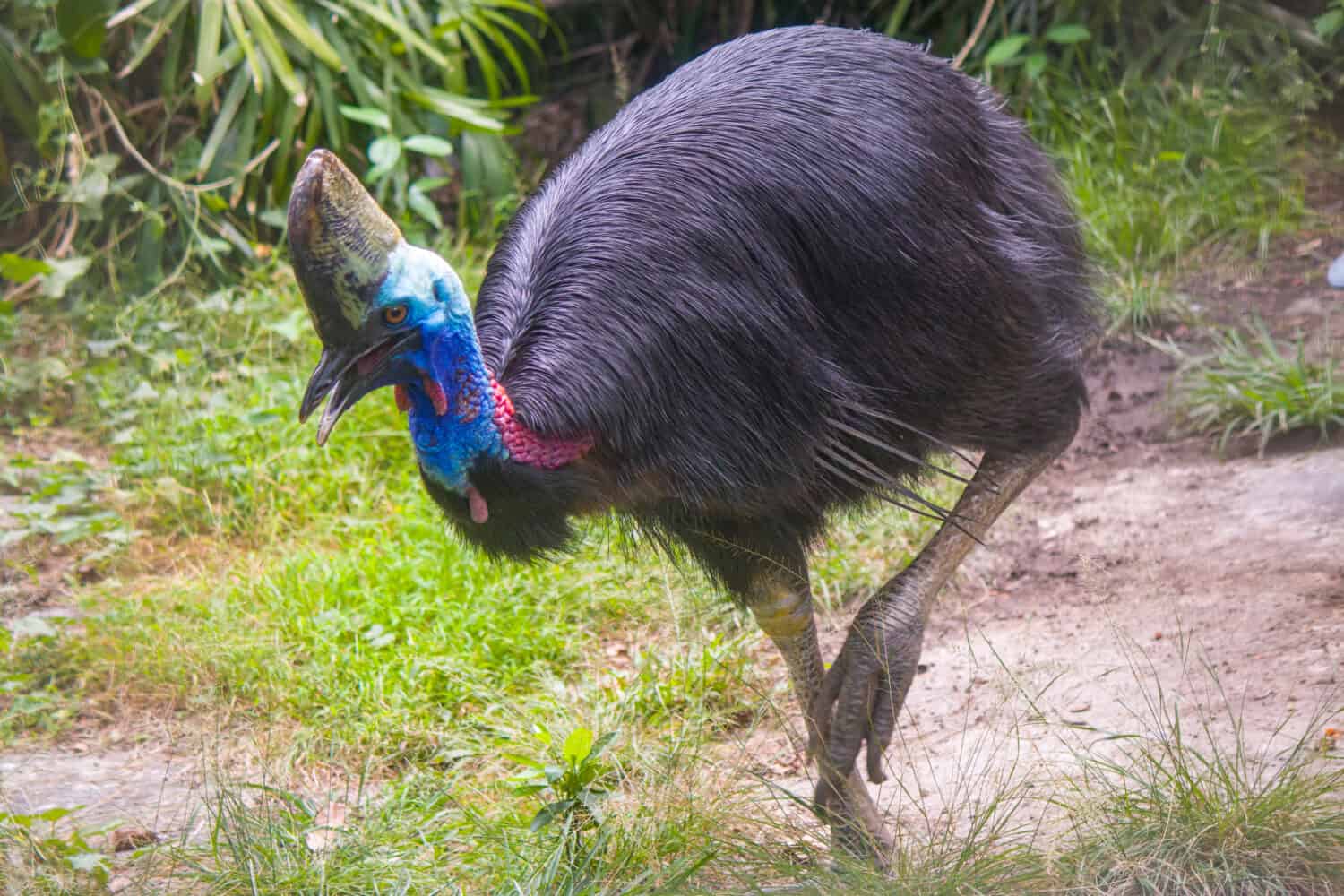
In addition to being good runners, cassowaries are strong swimmers.
©Danny Ye/Shutterstock.com
Although not as tall as an ostrich, the cassowary is an impressive bird. Standing up to 6 feet tall, the cassowary’s long legs allow it to jump 7 feet straight up into the air and run up to 31 miles per hour. Cassowaries are widely considered the most dangerous bird in the world thanks to its 4-inch-long dagger-like claws.
12. Secretarybird

The secretarybird has crane-like legs but an eagle-like head
.©Karel Bartik/Shutterstock.com
The secretarybird (Sagittarius serpentarius) has the longest legs of any bird of prey. Its legs are nearly twice as long as those of ground birds of similar body mass — so long that the secretarybird must bend its legs to eat or drink. Secretarybirds are up to 4.3 feet tall and have a 6.9-foot wingspan.
11. Emu

Emus live 10-20 years in the wild.
©Ken Griffiths/Shutterstock.com
The emu (Dromaius novaehollandiae) is the largest native bird in Australia. This flightless bird can grow up to 6 feet tall with incredibly strong, long legs. The only bird to have calf muscles, the emu can jump 7 feet straight up in the air. Their strong legs also allow emus to run up to 31 miles per hour.
10. Black-winged Stilt
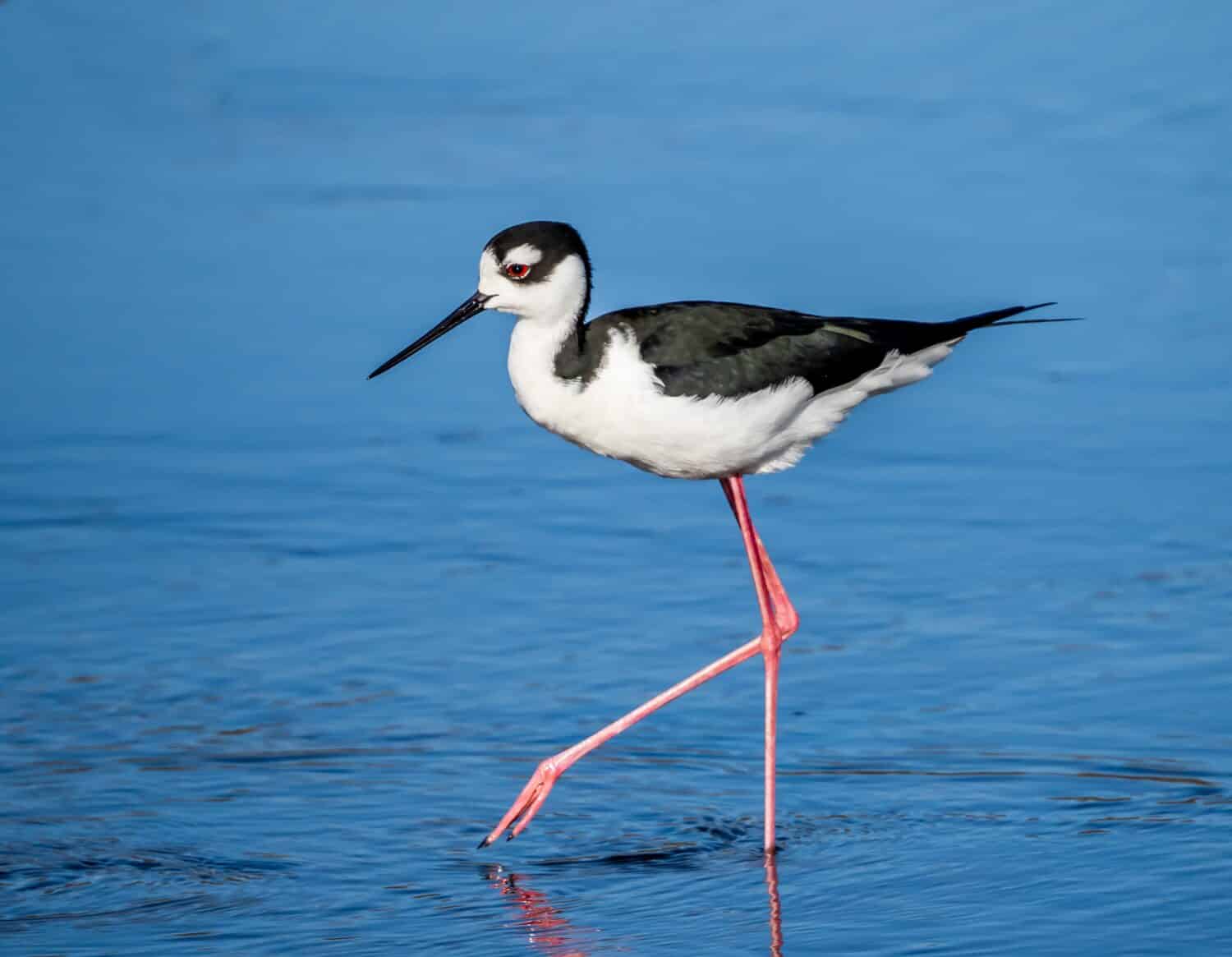
The stilt has distinctive coral-pink legs.
©Jim Schwabel/Shutterstock.com
While the ostrich has the longest legs of any bird, the black-winged stilt (Himantopus himantopus) has the longest legs relative to its body size. Measuring just 14-16 inches tall, the stilt’s legs are 7-9 inches long — comprising up to 60% of its total height! A wading bird, it is found in wetlands and marshes with shallow water throughout most of Africa.
9. Red Kangaroo

The red kangaroo’s tail is also extremely long and muscular and can measure over 3 feet long.
©FairFoto/Shutterstock.com
Native to Australia, the red kangaroo (Osphranter rufus) is the largest kangaroo species. Red kangaroos measure 4-6 feet tall, with legs that can be over 3 feet long. These powerful legs propel the kangaroo forward and allow it to hop 6 feet high and cover 25 feet in one jump. In comparison, their arms are about 1/3 the length of their legs.
8. Dromedary Camel
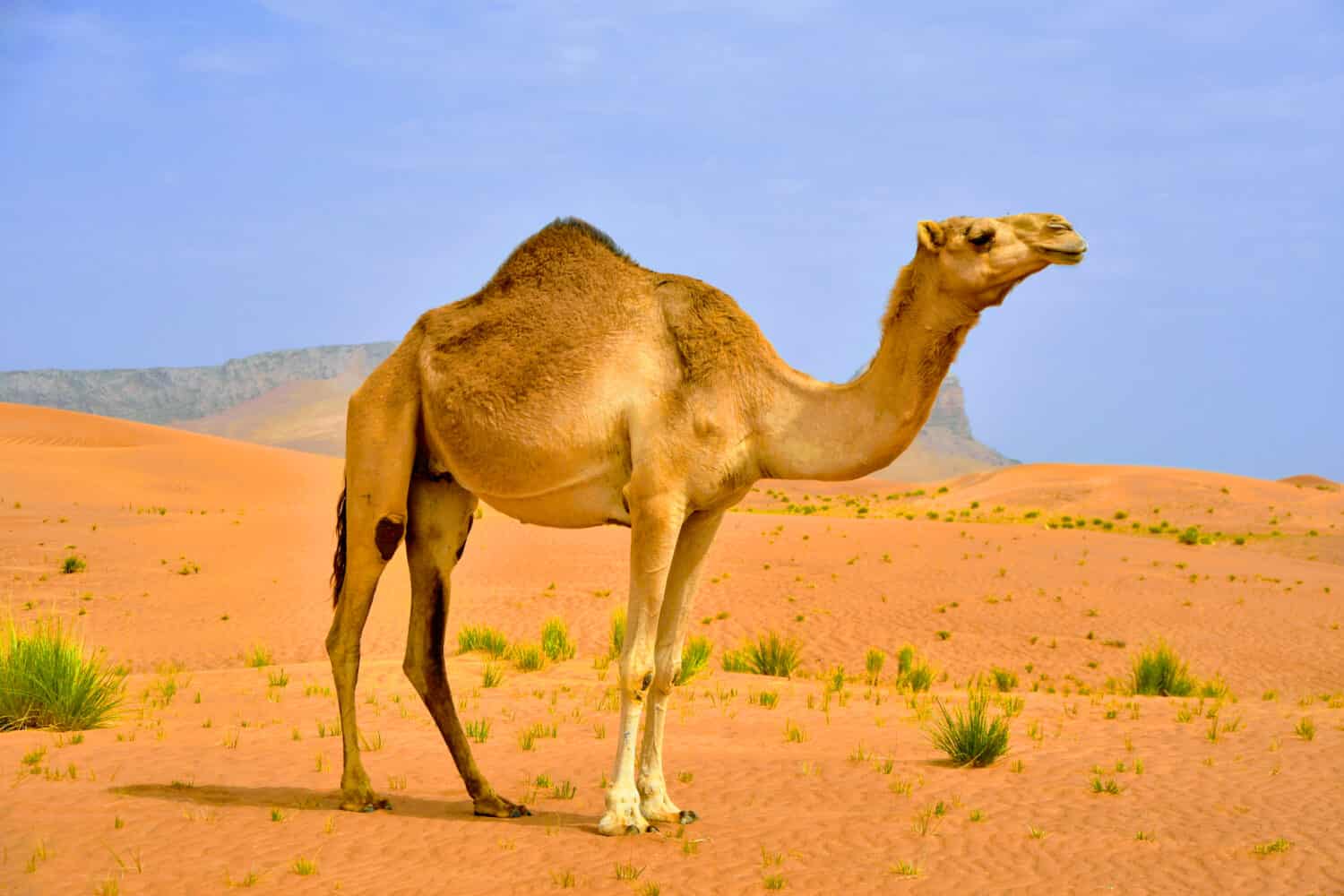
The dromedary’s hump can store up to 80 pounds of fat.
©Shengyong Li/Shutterstock.com
Also known as the Arabian camel, the dromedary camel (Camelus dromedarius) is the tallest species of camel. This camel only has one hump and stands up to almost 8 feet tall at the shoulder. Females are slightly smaller than males, reaching around 6 feet at the shoulder. Camels have two large toes on each foot to help spread their weight to prevent them from sinking into the sand of the Sahara Desert and arid regions of Africa, Middle East, and northern India.
7. Shire Horse
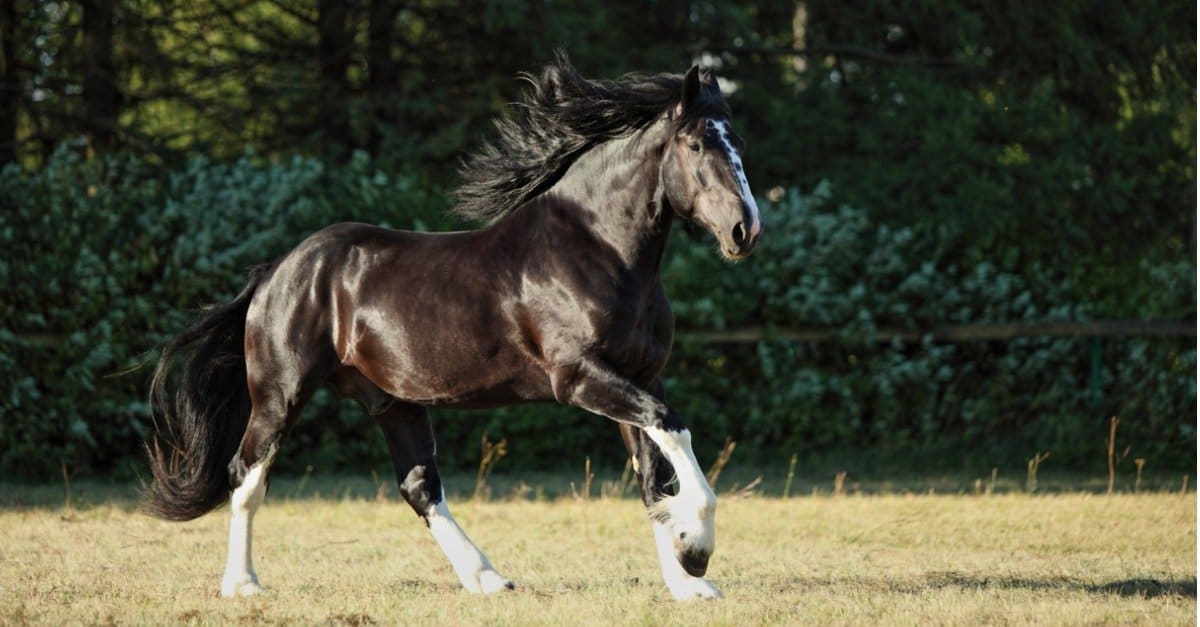
Shire horses are one of the oldest breeds of draft horses.
©iStock.com/kondakov
Bigger than even Clydesdales, the shire horse is the tallest horse breed in the world. A breed of draught horse, the shire stands over 6 feet at the shoulder and can weigh 3,000 pounds. The tallest horse ever recorded was a shire that measured an impressive 7.25 feet at the shoulder.
6. Alaska Moose
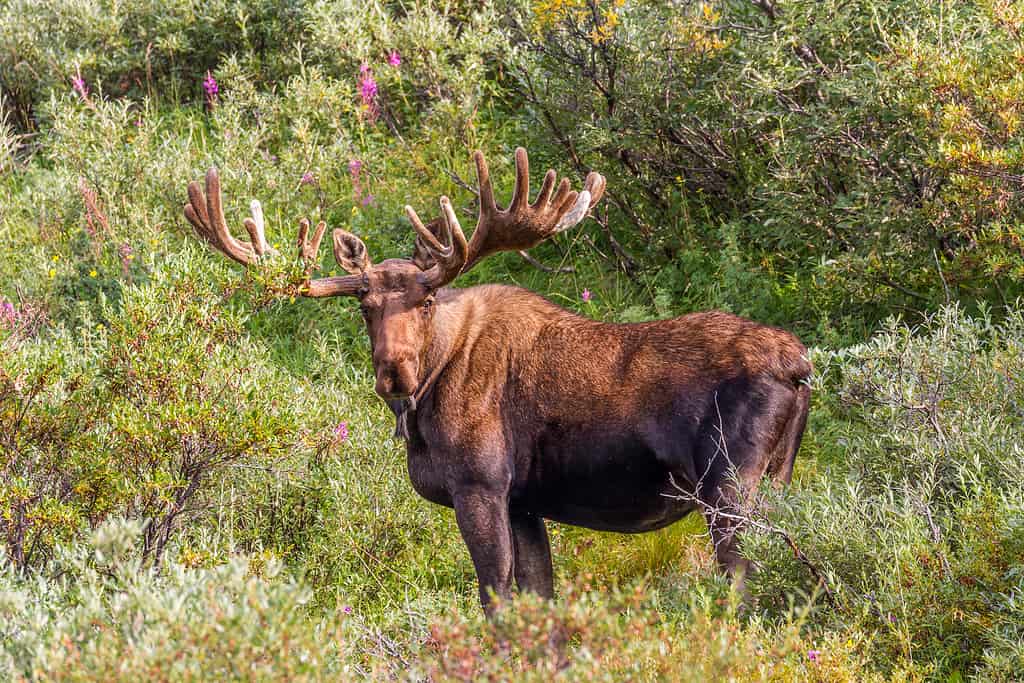
Bull moose can weigh up to 1,600 pounds.
©JacobLoyacano/Shutterstock.com
Don’t mess with an Alaska moose (Alces alces gigas)! The largest subspecies of moose, the Alaska moose is a massive animal with very long legs. Measuring 5-7 feet from hoof to shoulder, the Alaska moose can easily jump an 8-foot fence. Its strong legs propel it to running speeds of up to 35 miles per hour, and swimming speeds of up to six miles per hour.
5. Giant Pacific Octopus

The record giant pacific octopus weight more than 600 pounds and was 30 feet long.
©karen crewe/Shutterstock.com
OK, so an octopus (Enteroctopus dofleini) doesn’t exactly have legs, but the giant Pacific octopus has some seriously long arms! The octopus’ arms can be up to 16 feet long. Weighing up to 160 pounds, this octopus is native to the North Pacific where it feeds on seafood, primarily crustaceans.
4. African Elephant

An elephant’s skull weighs 115 pounds.
©Volodymyr Burdiak/Shutterstock.com
Measuring 13 feet high at the shoulder, the African elephant (Loxodonta africana) has some seriously big legs. Elephants can stand up to 19 feet tall when they stand on their back legs. These large animals can weigh up to 14,000 pounds, making it the largest terrestrial animal.
3. Japanese Spider Crab
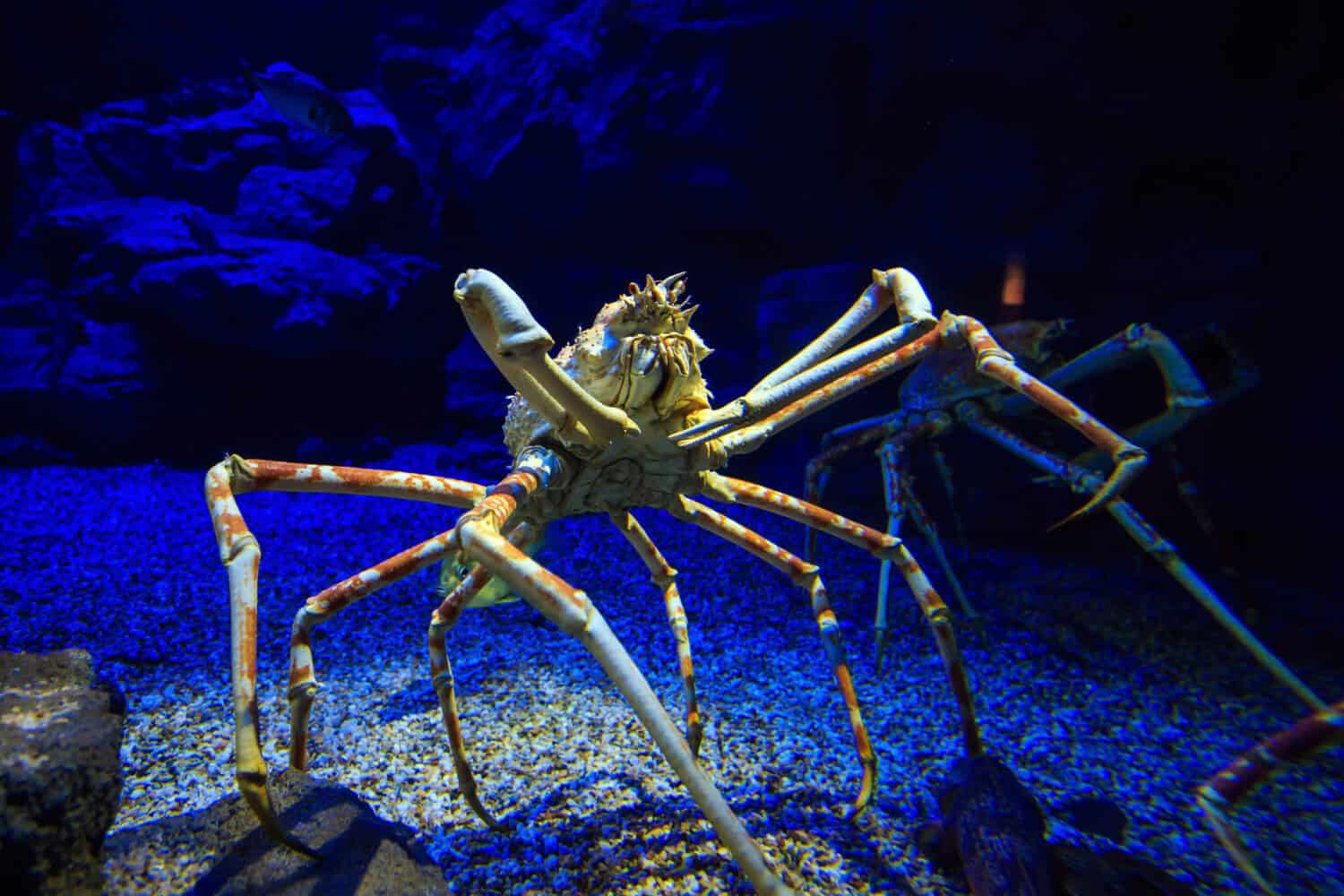
The Japanese spider crab can live up to 100 years.
©f11photo/Shutterstock.com
If you want something out of deep-sea nightmares, check out the Japanese spider crab (Macrocheira kaempfer). These massive crabs can weigh up to 42 pounds. They have a 12-inch-wide carapace and a leg span of up to 13 feet from claw to claw. Luckily, you’ll only run into the marine crabs off the coast of Japan.
2. Ostrich
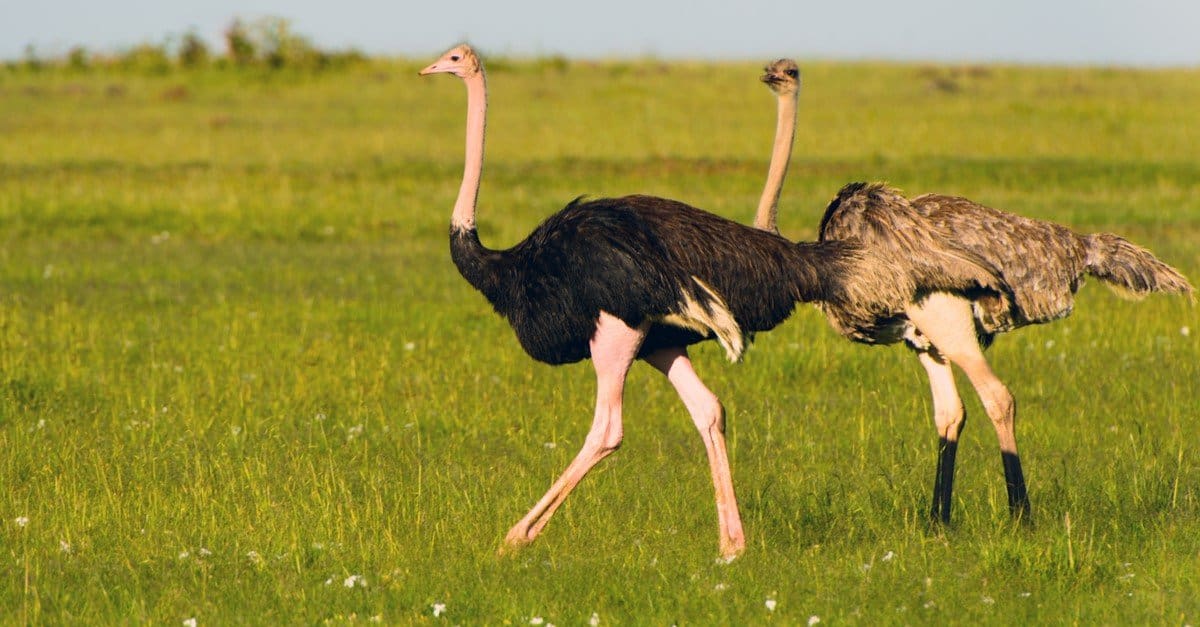
While ostriches can’t fly, they are the fastest running bird in the world.
©Cristian Zamfir/Shutterstock.com
The biggest bird in the world, the ostrich (Struthio camelus) also has some impressive legs. An ostrich’s 3-foot-long neck is rivaled only by its 4-foot-long legs. These legs are the longest legs of any bird in the world. When an ostrich runs, its long legs propel it forward in 10–16-foot strides. This allows ostriches to run up to 43 miles per hour.
1. Giraffe
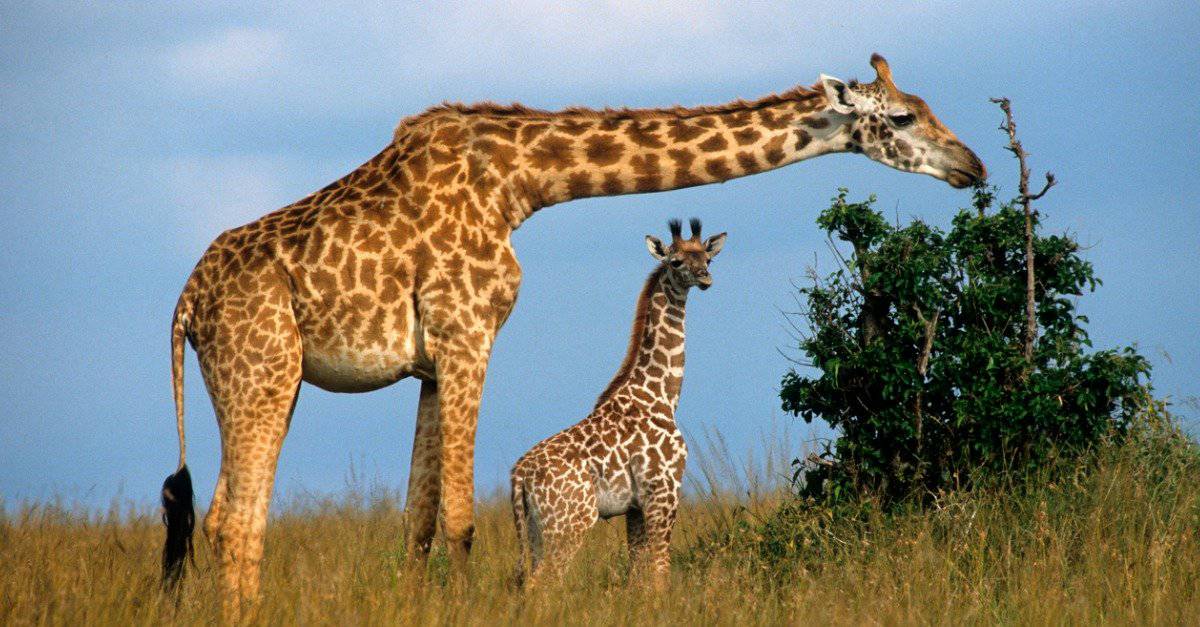
Baby giraffes can run 10 hours after birth.
©iStock.com/Michel VIARD
It comes as no surprise that the giraffe (Giraffa camelopardalis) is the animal with the longest legs. The tallest terrestrial animal, a giraffe’s legs can be up to 6 feet long, and measure 12-15 feet at the shoulder. These long legs allow the giraffe to run up to 35 miles per hour for short distances, or 10 miles per hour for longer stretches.
The photo featured at the top of this post is © iStock.com/LindaMarieCaldwell
Thank you for reading! Have some feedback for us? Contact the AZ Animals editorial team.






